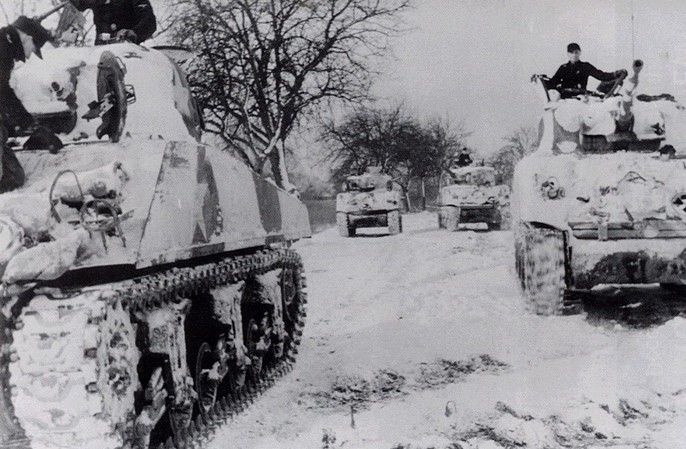
Paul Stalter can never forget the fateful event that transpired on January 7, 1945 in Herrlisheim and it will always be in his memory. Cpl. Stalter was a gunner with the 23rd Tank Battalion. He was one of the men who were in a Sherman tank. “We called ourselves the Hellcats,” Stalter said. “We sent 15 tanks into the Stainwald, a woods where we thought there were a few German tanks. Actually, there were two Panzer units there and nine of our tanks were hit.”
One of the tanks that received enemy blow was that of Stalter’s. “A German 88 shell hit between our turret and our gun shield and made a huge hole. I was just four feet away from where it came in,” he added. Despite the damage of his Sherman tank, Stalter was lucky to suffer a wound to one finger due to a slight shrapnel. But when he got off the tank, Stalter’s leg got injured when he hit the ground. “I didn’t have any feeling in my left leg. I couldn’t run. My commander and the driver came back and carried me to safety,” Stalter said. “I always wish I had been able to thank them. The commander was killed later, and I never saw the driver again.”
The fight was recorded in history as one of the most brutal encounters especially for the 12th Armored Division where Stalter was assigned.
Stalter was given immediate medical attention at a first-aid station. After receiving emergency care, he was back into action. “They said they had no reinforcements and had to send men back to fight,” he said. In another fighting, Stalter’s tank company got caught in an open field by heavy German artillery. They were open targets and their enemies immediately pounded the tanks with heavy gunfire.
“It was pure murder and nobody got out. Men were praying,’’ he said.
Stalter related that the tanks received great damage. The survivors had no choice but to blow them up before fleeing to safety. The 12th Armored Division where Stalter was part of was under the command of General George C. Patton’s 3rd Army. “We liberated about seven concentration camps,” Stalter said. The gunner was a witness to the horrors of the Holocaust. He could only remember a few of the camps that they were able to liberate. But he recalls the piles of lifeless bodies of victims and the feeling of fury that they felt.
The unit started their missions near Paris, France. They were able to reach Austria. One of their missions was to overrun the mountain chalet of Hitler. They never had the chance to. The war ended then. “I got off pretty good,” Stalter added. “I should have made general because so many men in my unit were gone. There was hardly anyone left from the first group. It was a mess.’’
Stalter was raised as a kid on their home in Orchard Street in Mansfield. When his parents separated, he moved with his mother to Lima. He left high school in the 11th grade. In 1933, he got a job at Westinghouse where he spent 40 years of his life. He was drafted in the Army during the early part of the war. He recalled the day when he and the other draftees paraded down North Main Street and towards a railroad station. They would soon find themselves on board a train for Columbus and Fort Hayes.
He received training for a long duration. He was only able to join the war until after D-Day. He then went into one fighting after another. When he left the Army after the war, he proceeded to work at Westinghouse. He then met his wife, Margaret Kulka. They got married in 1955. She however died in 1975 and left him without a child. He retired in 1980. He spent the rest of his life in his apartment in Ontario where he moved 18 years ago. He is now 92 years old.
He joined the Disabled Veterans of America but later on dropped out.
